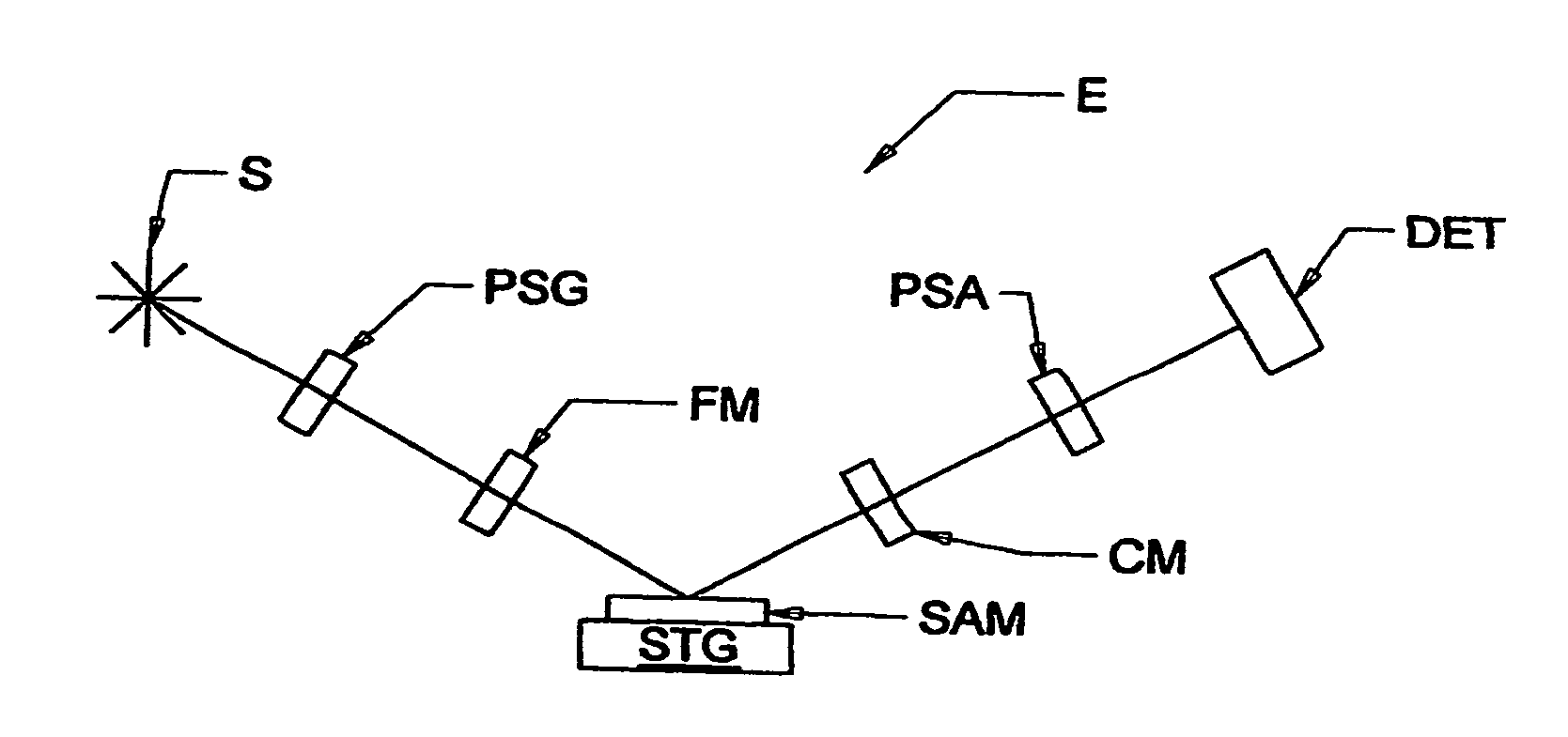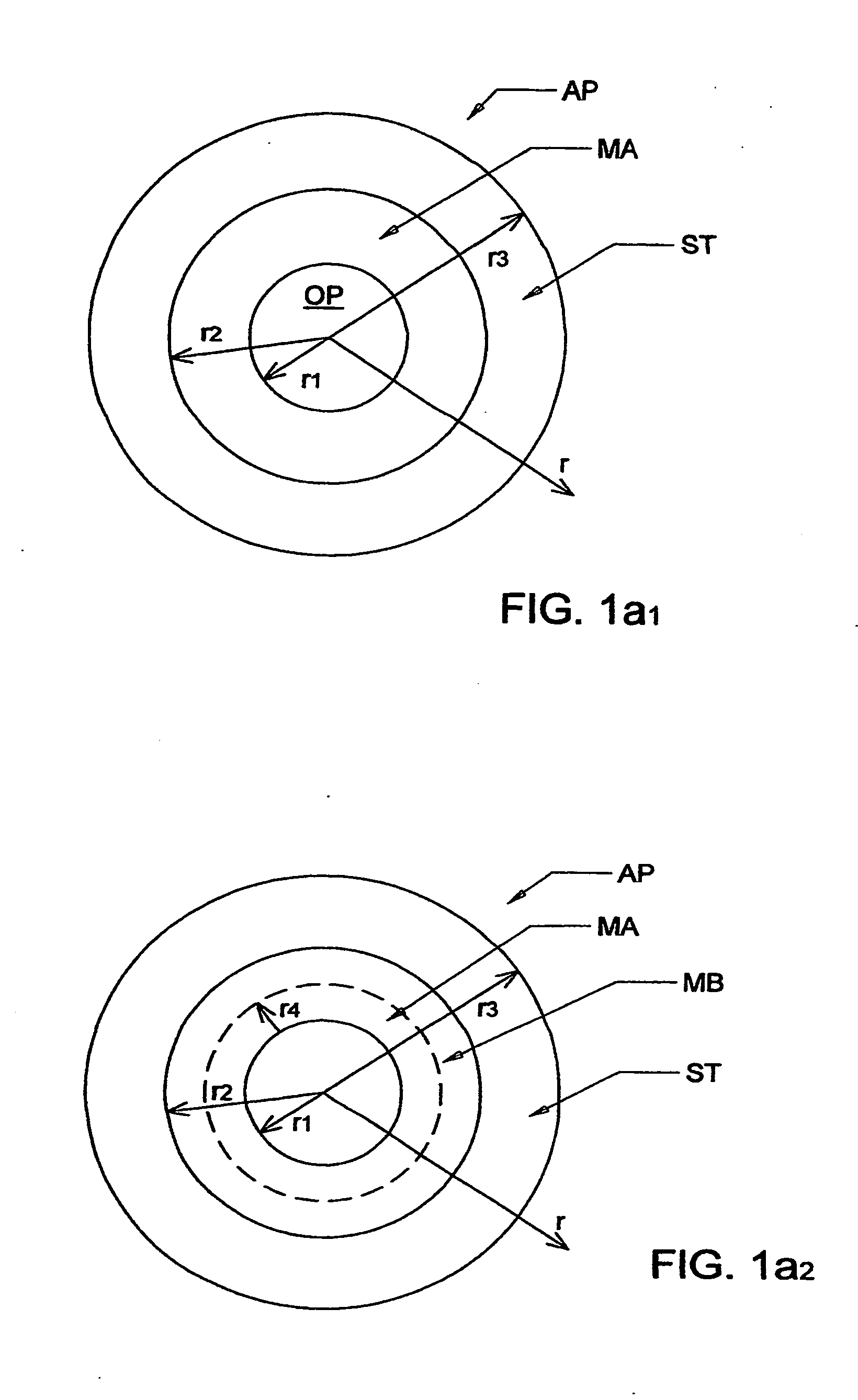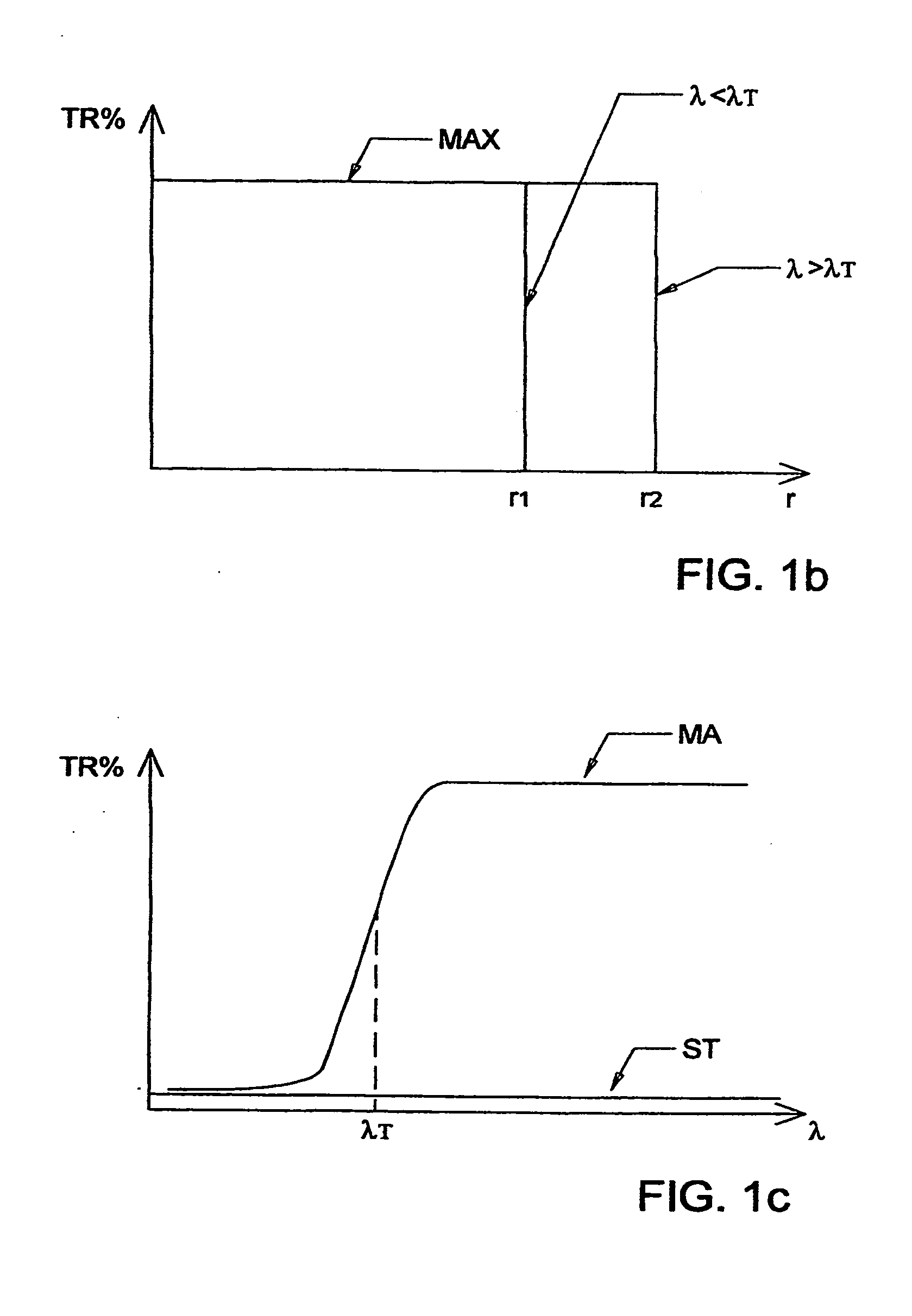Operation of an electromagnetic radiation focusing element
a technology of electromagnetic radiation and focusing element, which is applied in the direction of optical radiation measurement, instruments, spectrometry/spectrophotometry/monochromators, etc., can solve the problems of reducing the effect of diffraction, increasing the effect of aberration, and affecting so as to improve the performance improve the operation of the focusing element.
- Summary
- Abstract
- Description
- Claims
- Application Information
AI Technical Summary
Benefits of technology
Problems solved by technology
Method used
Image
Examples
Embodiment Construction
[0104]Turning now to the Drawings, FIG. 1a1 shows an aperture (AP) which is made from various materials at various radial (r) extents. Radius (r1) identifies a opening through which a electromagnetic radiation of a given wavelength can pass. Radius (r2) shows a region of the aperture, outside the radius (r1), which is made of material (A), and radius (r3) shows a region beyond radius (r2) which is a beam stopper (ST). FIG. 1a2 also shows that the aperture (AP) can comprise additional areas made of various other materials, (eg. (MB) between r1 and r4). Additional concentric rings of different materials can be present and the Drawings are to be considered demonstrative and not limiting. A similar plot results for each wavelength. Further, note that the material present between indicated radii r1 and r2 is the same through said 360 degrees, as is the different material between radii r2 and r4. Support for this is found in the present Application FIGS. 1a1 and 1a2. It is noted that this...
PUM
 Login to View More
Login to View More Abstract
Description
Claims
Application Information
 Login to View More
Login to View More - R&D
- Intellectual Property
- Life Sciences
- Materials
- Tech Scout
- Unparalleled Data Quality
- Higher Quality Content
- 60% Fewer Hallucinations
Browse by: Latest US Patents, China's latest patents, Technical Efficacy Thesaurus, Application Domain, Technology Topic, Popular Technical Reports.
© 2025 PatSnap. All rights reserved.Legal|Privacy policy|Modern Slavery Act Transparency Statement|Sitemap|About US| Contact US: help@patsnap.com



